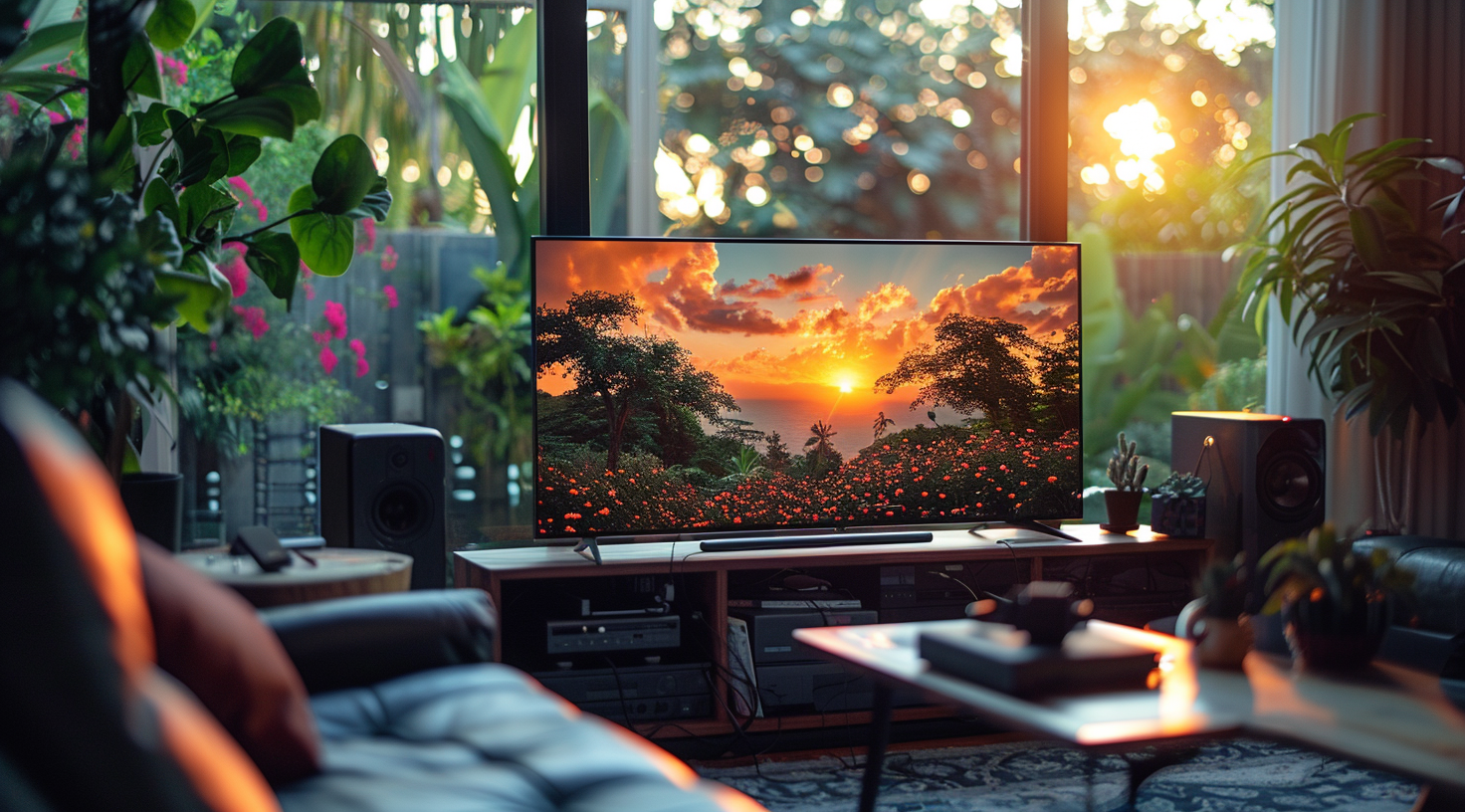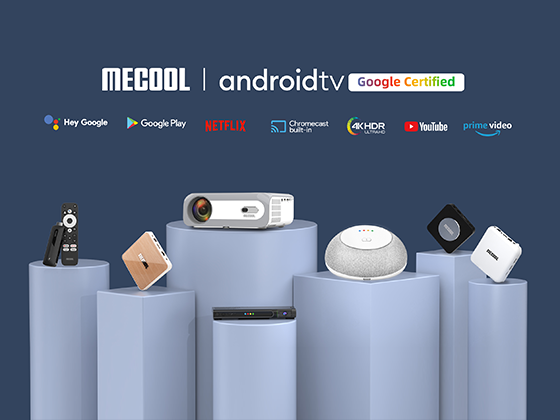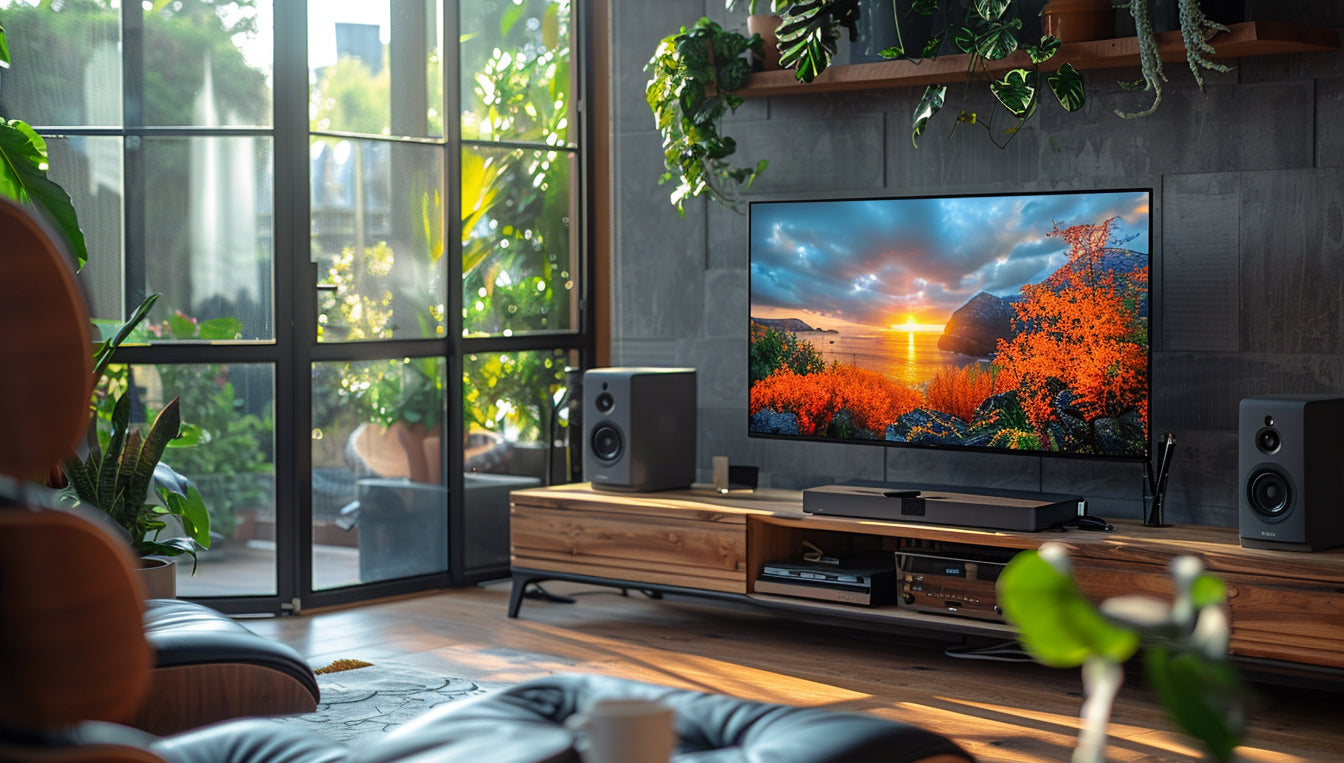Introduction
So you want to cut the cord and stream your favorite shows and movies on demand? You have two solid options: OTT and IPTV boxes. At first glance, these devices seem pretty similar. They both stream content over the internet and connect to your TV.
Content Sources
The biggest difference comes down to where they get their content. OTT boxes like Roku and Fire TV pull streams from apps like Netflix, Hulu, and YouTube. You have to subscribe to each service individually. IPTV boxes on the other hand, get linear TV channels and on-demand content from your internet service provider. So with an IPTV box from AT&T, for example, you'll get channels like ESPN, TNT, and USA along with on-demand shows and movies all in one place.
User Experience
The way you interact with the content also differs. OTT boxes have a more app-centric experience where you open individual apps to access content. IPTV boxes provide a more traditional channel surfing experience and unified interface for on-demand and live TV. If a traditional TV experience is what you're after, an IPTV box is probably your best bet. But if you want the flexibility to pick and choose from various streaming services, an OTT box is the way to go.
OTT Box Technology
OTT stands for "over-the-top", meaning content is delivered over the internet rather than through traditional cable or satellite providers. OTT boxes, like Roku or Fire TV, connect directly to your TV and let you stream content from popular services like Netflix, Hulu, and YouTube.
With an OTT box, you get access to a huge library of on-demand shows, movies, and more. The content is delivered over your internet connection, so you can watch whatever you want, whenever you want. OTT boxes typically have a simple, easy-to-use interface that makes finding content a breeze.
The downside is that OTT boxes rely entirely on your internet connection. If your Wi-Fi goes down or isn't fast enough, your show won't go on. OTT services are also subscription-based, so you'll need accounts with individual streaming services to access their content.
While IPTV uses dedicated video delivery infrastructure, OTT boxes leverage the open internet. They provide flexible, on-demand content at an affordable price. If you're looking for a streaming solution that gives you freedom and control over what you watch, an OTT box could be the perfect option.

IPTV Box Technology
IPTV stands for Internet Protocol Television. An IPTV box receives TV signals through your broadband Internet connection instead of over the air or cable. ### When you connect the IPTV box to your TV and router, it accesses live TV channels and on-demand content provided by your IPTV service provider's streaming platform.
IPTV technology requires a high-speed Internet connection to deliver live and on-demand video content with minimal buffering or lag. The IPTV box decodes the IPTV signal and transmits the content to your TV in a format it can display. IPTV boxes typically come with remote controls, electronic program guides, and access to premium TV channels as part of a subscription service.
Some key benefits of IPTV include:
-
Access to hundreds of live TV channels
-
Large on-demand libraries of movies, shows, and streaming content
-
Often cheaper than traditional cable TV packages
-
Advanced features like pausing live TV, restarting programs already in progress, and scheduling DVR recordings
The main downside is that IPTV requires a fast, reliable Internet connection to work properly. It may also have limited high-definition (HD) channel options compared to cable or satellite TV. However, IPTV technology and channel lineups are improving all the time.
Overall, an IPTV box delivers live TV and on-demand streaming content over your Internet connection. For cord-cutters looking to replace expensive cable subscriptions, an IPTV service can be an affordable, full-featured alternative.
Differentiating OTT and IPTV
OTT boxes and IPTV boxes may seem similar on the surface, but there are some key differences to understand.
Content Delivery
OTT boxes deliver content over the open internet, while IPTV boxes use a dedicated IPTV network to stream content directly to your TV. IPTV typically offers higher bandwidth and faster streaming speeds.
User Interface
IPTV providers like AT&T and Verizon design custom interfaces for their IPTV services. OTT devices like Roku and Fire TV usually have a standard interface across all devices. You’ll likely find the IPTV interface easier to navigate.
Content Sources
IPTV services source content from TV networks and cable channels, so you’ll have access to live TV and on-demand shows and movies. OTT devices also provide access to streaming services like Netflix, Hulu and YouTube. OTT offers more flexibility and control over the content you can access.
Subscription Models
Most IPTV services require an ongoing TV subscription, either bundled with internet service or as a standalone plan. OTT devices typically don’t require a subscription and allow you to subscribe to only the streaming services you want. OTT may be more budget-friendly.
In summary, while IPTV and OTT streaming devices are both convenient options for watching content on your TV, there are significant differences in how they deliver content, their interfaces, content selections and subscription models. The right choice for you depends on which factors are most important. Compare these key points to determine which device suits your needs and budget.

Performance and Quality
When it comes to streaming performance, OTT and IPTV boxes differ significantly. OTT boxes rely on your internet connection to deliver content, so the quality of your Wi-Fi signal directly impacts buffering, lag, and video quality. IPTV boxes use a dedicated television service to provide content over a closed network, resulting in a seamless streaming experience with minimal buffering or quality issues, as long as you have a strong in-home network.
Internet Dependence
OTT boxes like Fire TV and Roku require a high-speed internet connection to function properly. Slower internet speeds often lead to frequent buffering, laggy navigation, and poor video quality. IPTV boxes leverage a closed television service to deliver content over your in-home network, so they do not rely on your internet and are less prone to performance issues. For the best streaming experience, IPTV is really your only option if you have an unreliable or slow internet connection.
Video Quality
When it comes to video resolution and HDR support, OTT and IPTV boxes are quite comparable. Most mainstream options from both categories now offer 4K video and HDR for enhanced color and contrast. However, due to their dependence on your internet connection, OTT boxes may struggle to consistently stream 4K or HDR content without buffering or quality drops. IPTV boxes can typically handle high-resolution, HDR video with no performance impact thanks to their dedicated content delivery method. So if pristine picture quality is most important, IPTV has a slight edge.
In the end, choosing between OTT or IPTV comes down to whether streaming performance and quality or content options and flexibility are more important to you. Both platforms have their pros and cons, so evaluate how you plan to use the device to determine the best solution for your needs.
Content Options and Availability
When it comes to streaming content, OTT and IPTV boxes offer some key differences. ###OTT devices provide access to subscription-based streaming services like Netflix, Hulu, and Amazon Prime Video. You can choose the services you want and sign up for monthly plans to access a wide range of on-demand movies, TV shows, and original programming. In contrast, ###IPTV boxes provide live TV channels and on-demand content from your cable or satellite provider. The actual channel lineup will depend on your pay TV subscription.
If you’re looking for the latest hit shows and movies, OTT boxes may have an edge. Services like Netflix and Hulu frequently add new, popular content. IPTV options are more limited to what your pay TV provider offers. However, for live events like sports, news and award shows, IPTV has the advantage. You’ll get access to many major broadcast and cable channels to watch live and breaking coverage.
In the end, the best option for you comes down to how you prefer to stream content - on-demand, live or a mix of both. Compare the channel and programming options that each device provides based on your interests to determine which can satisfy your streaming needs. With the range of affordable OTT and IPTV devices available, you may even find that using both allows you to enjoy the benefits of each technology.
User Preferences and Flexibility
With an OTT box, you’re in full control of the content you want to access. You can easily install apps for all your favorite streaming services, like Netflix, Hulu or YouTube TV, and enjoy content on-demand. OTT devices give you the freedom to choose what you want to watch and when you want to watch it.
IPTV boxes, on the other hand, typically offer a selection of curated channels and on-demand content provided by your internet or cable service provider. The options may be more limited, but the content is delivered in a familiar channel-surfing style. If you prefer a more traditional live TV experience and channel guide, an IPTV box could be appealing.
In the end, it comes down to how much control and flexibility you want over your streaming content. OTT boxes are ideal for cord cutters who want maximum choice, while IPTV boxes may satisfy those looking to replicate the cable TV experience. Both options can deliver quality streaming content, so think about your needs and priorities to determine which device is the best fit.

Future Trends and Developments
Both OTT and IPTV technologies are constantly evolving. As streaming becomes more widespread, OTT and IPTV providers aim to improve content delivery and enhance user experiences.
OTT services may start offering live TV channels and cloud DVR features to compete with traditional pay TV. More content partnerships could expand OTT libraries. Personalized profiles and AI-based recommendations may improve OTT navigation. 5G connectivity may enable OTT streaming in places without Wi-Fi and boost 4K/8K streaming on mobile devices.
IPTV is transitioning to all-IP networks, replacing older protocols. This could reduce costs, improve picture quality, and enable new IPTV features. AI and VR may enhance IPTV interfaces and content. Cloud platforms may simplify IPTV management and delivery. IPTV providers may start offering OTT companion apps to stream content on the go.
In the future, OTT and IPTV services may start to converge. Some pay TV operators already offer OTT streaming platforms. More providers could follow suit, bundling OTT and IPTV services into unified TV and streaming packages.
As OTT and IPTV services evolve, streaming devices will need to keep up. The next generation of streaming boxes may support new content types, streaming formats, and smart home integrations. Voice controls, personalized profiles and AI could improve the streaming experience. The future of streaming looks exciting, with more choices and advanced features on the horizon!
Conclusion
To summarize, while OTT and IPTV boxes both deliver streaming content to your TV, there are some key differences to consider when choosing between them. An OTT box offers more flexibility and control but may require multiple subscriptions to access all the content you want. IPTV provides an all-in-one solution but less customization.
For the tech-savvy, an OTT box lets you choose exactly which streaming services you want to sign up for and when. You have full control over the interface and features. However, you’ll need individual subscriptions to services like Netflix, Hulu or YouTube TV to access their content. An IPTV box offers a pre-packaged bundle of channels and streaming options in one subscription, with a standard interface, but less customization.
In the end, it comes down to how much choice and control you want over your streaming experience versus the convenience of an all-in-one solution. Evaluate how you like to watch TV and what sources of content matter most to you. Then choose the streaming device that best aligns with your needs and priorities. With this guide, you now have a solid understanding of OTT and IPTV technologies and how these popular streaming boxes compare. Happy streaming!
FAQS
1. What is an OTT Box, and how does it differ from an IPTV Box?
An OTT Box, short for "Over-The-Top Box," delivers content over the internet, while an IPTV Box, or "Internet Protocol Television Box," receives content through internet protocol networks. The key difference lies in their content delivery methods.
2. What are the main content sources for OTT Boxes and IPTV Boxes?
OTT Boxes typically access content from online streaming services like Netflix, Hulu, and Amazon Prime Video. In contrast, IPTV Boxes receive content from dedicated IPTV service providers, offering live TV, on-demand content, and more.
3. How do the user interfaces of OTT Boxes and IPTV Boxes differ?
OTT Boxes often feature user-friendly interfaces with app-based navigation, allowing users to stream content from various sources. IPTV Boxes provide interfaces optimized for TV viewing, offering access to live TV channels and on-demand content.
4. What are the subscription models for OTT and IPTV services?
OTT services typically offer subscription-based access to individual streaming platforms, while IPTV services may offer subscription packages that include access to live TV channels, on-demand content, and additional features.
5. Are OTT Boxes and IPTV Boxes compatible with different technologies and devices?
OTT Boxes are compatible with a wide range of devices, including smart TVs, smartphones, and tablets, allowing for flexible content consumption. IPTV Boxes are designed for use with IPTV-specific networks and may require dedicated hardware for optimal performance.




